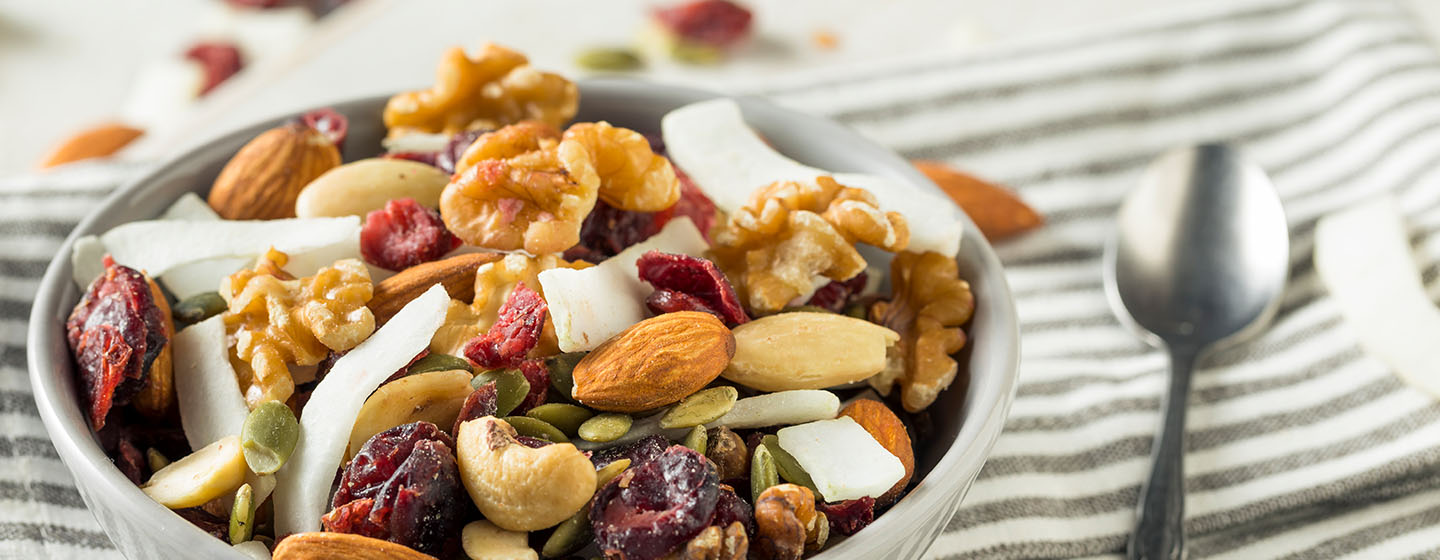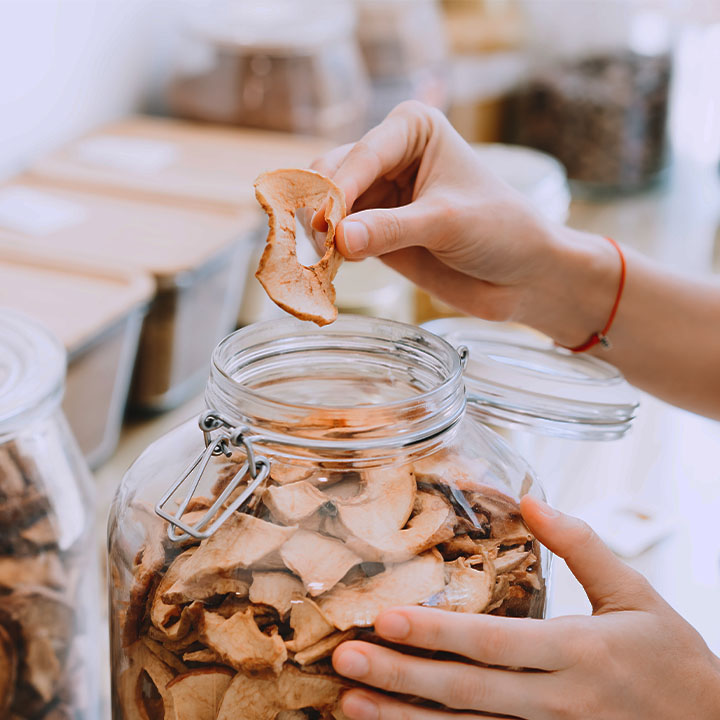Making dried fruit: how does it work?
The lower the water content, the longer the shelf life. This is the basic principle that automatic dehydrators work on - regardless of whether you want to dry a mango or banana, dry small or large fruits, or process meat and fish. In more technical terms: so-called grid drying gradually removes the water from the food by means of warm air. Advantage number one: you don't have to add any sugar. Even better: Vitamins, minerals and fibre are better preserved.
Dehydrated foods like dried fruit shrink and lose weight in the process. This in turn facilitates storage at home and transport, for example if you want to dry fruit yourself and take it with you to the office, to the park or to friends. A residual moisture of around 15 percent is optimal. For comparison: industrial dried fruit often has a higher water content of up to 30 percent and is therefore chemically preserved - not to mention the added sugar. In summary: gentle, mobile, natural, versatile, healthy and delicious. Amazingly big arguments for such small tidbits.


